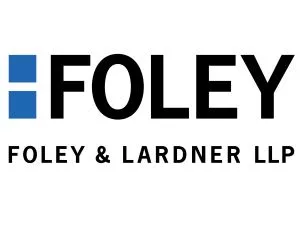- within Government, Public Sector, Criminal Law and Insurance topic(s)
- with readers working within the Healthcare industries
As has been widely publicized in the general and social media, on October 1, 2025, the U.S. federal government officially entered a shutdown of the 2026 fiscal year due to Congress' failure to authorize continuing appropriations. Even in a funding gap shutdown, some essential governmental activities — especially those related to health and safety matters — continue, albeit in a more limited fashion. Here is a summary of how the shutdown has affected the agencies that most directly impact employment-related matters.
Department of Labor (DOL):
Wage and Hour Division (WHD): Most regulatory and enforcement activities have ceased, except for those involving health and safety (e.g., child labor violations). Only 10 out of a pre-shutdown total of 1,270 employees remain active. Standard investigations, compliance audits, and technical assistance are paused.
Occupational Safety and Health Administration (OSHA): Operations are limited to critical functions, such as: inspections of imminent danger situations; investigations of workplace fatalities and catastrophes; enforcement actions needed to meet statutory deadlines for citations; and follow-up inspections of serious violations. OSHA's adjudicatory body, the Occupational Safety and Health Review Commission (OSHRC), is closed, delaying hearings and settlements.
Foreign Labor Certification: The Foreign Labor Application Gateway (FLAG) system is offline, halting Labor Condition Applications (LCAs) and PERM processing, which are necessary to process certain work-related visas.
Other DOL Agencies: The Bureau of Labor Statistics, Office of Federal Contract Compliance Programs, and other sub-agencies are completely shut down, affecting data collection and regulatory reviews. The DOL will continue to provide support for the payment of benefits for which funding has not lapsed, including the Black Lung Benefits Act, the Federal Employees' Compensation Act, the Energy Employees Occupational Illness Compensation Program Act, the Longshore and Harbor Workers' Compensation Act, the War Hazards Compensation Act, and the Trade Adjustment Assistance (TAA) Program.
Equal Employment Opportunity Commission (EEOC):
Approximately 1,686 of 1,814 employees have been furloughed. There will be no new investigations, mediations, or hearings, no processing of Freedom of Information Act (FOIA) requests, and public outreach and trainings are halted. Limited functions that remain active include docketing new charges where filing deadlines are imminent and continuing court litigation where continuances haven't been granted.
National Labor Relations Board (NLRB):
There will be no processing of new representation petitions, all union elections and administrative hearings are postponed, and all case handling, investigations, and public outreach are halted. All filing deadlines are tolled, meaning they are paused and will resume once the shutdown ends. The NLRB website is effectively inoperative.
Federal Courts:
The federal courts remain open and are functioning normally (at least through October 17, 2025), as they are able to use reserve funds and court filing fees to remain operational. The Case Management/Electronic Case Files (CM/ECF) system continues to operate, allowing electronic filings and access to court documents. Nevertheless, some courts and particular judges have granted stays in civil cases, especially those where the federal government is a party. The website for the applicable district or appellate court as well as each judge's webpage should be consulted, especially after October 17.
Should the shutdown continue on beyond this week, even some of the ongoing activities described here may be scaled back, so be sure to consult our future editions. If/when the government reopens each agency, we will provide updates on when postponed matters will be handled.
The content of this article is intended to provide a general guide to the subject matter. Specialist advice should be sought about your specific circumstances.


